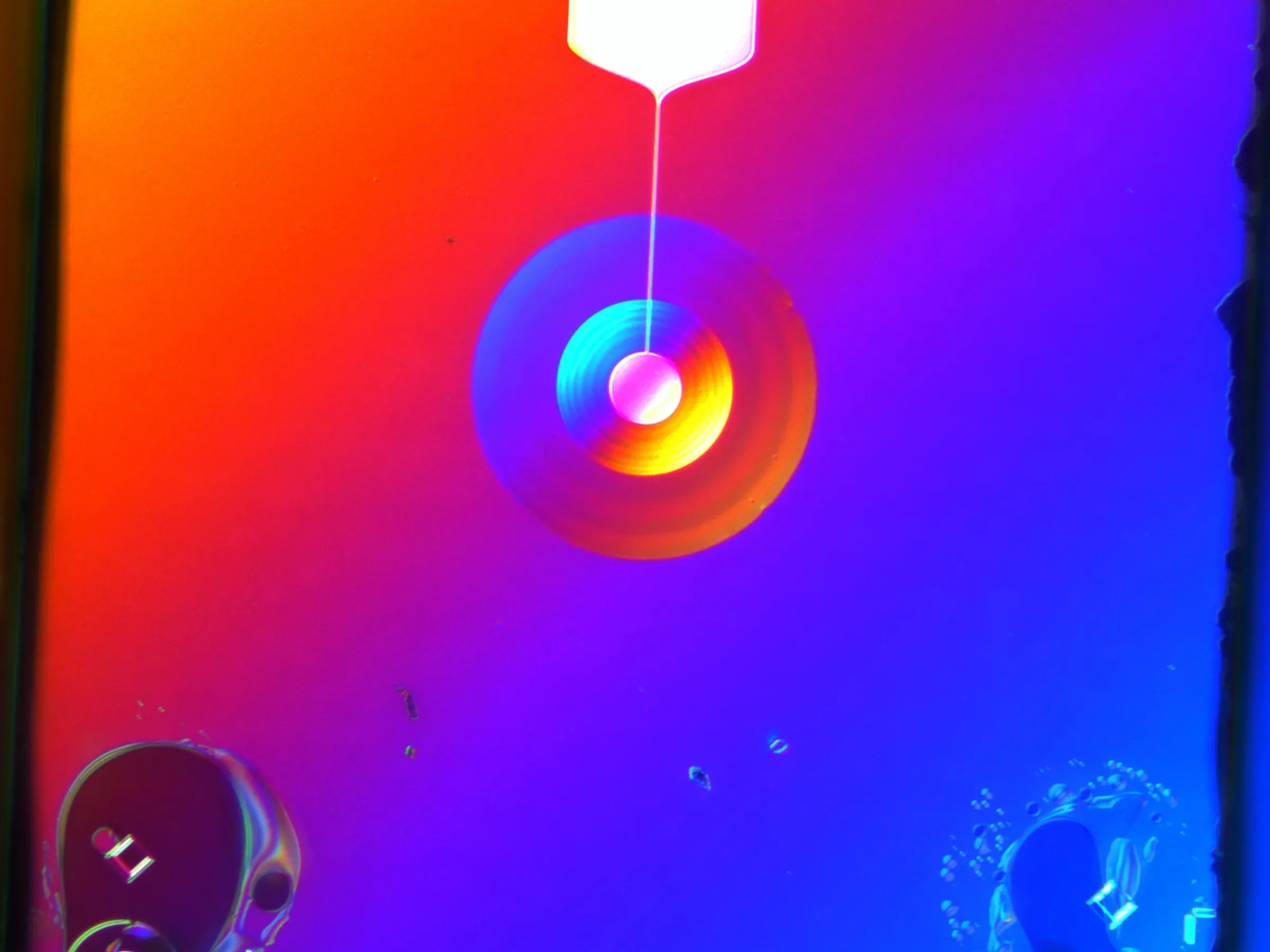Scientists Make First Mechanical Qubit
It’s similar to a drum skin that is simultaneously vibrating and still
Quantum computers that can theoretically find answers to problems no regular computer could ever solve rely on components known as qubits. Now scientists have created the first mechanical qubit—basically, a microscopic version of a drum skin that can behave a bit like Schrödinger’s cat, both vibrating and not vibrating at the same time. These could lead to mechanical quantum computers capable of running long, complex programs, as well as novel quantum sensors, researchers say.
Currently, most qubits rely on superpositions of electronic states—for instance, two different levels of electric charge. However, electromagnetic qubits typically have short lifespans, or coherence times, before their complex, fragile quantum states decay. This greatly limits their use.
Seeking longer coherence times, researchers began to explore creating mechanical qubits instead. These would depend on superpositions of vibrational states, and in theory they could possess long coherence times compared to electromagnetic qubits.
Now scientists at the Swiss Federal Institute of Technology (ETH), in Zurich, have for the first time built “a fully operational mechanical qubit,” says Yu Yang, a doctoral student in the lab of Yiwen Chu and part of the team that accomplished the feat. Yang and his colleagues detailed their findings in the 15 November issue of the journal Science.
Harmonics and hybrid qubits
One of the main challenges that had prevented the creation of mechanical qubits was a quirk of their energy states. An electromagnetic qubit behaves “anharmonically.” That is, there are uneven amounts of energy between its electronic states, and it’s the distinct nature of these states that makes them useful as qubits. In contrast, mechanical resonators operating at the extraordinarily small amounts of energy typical of quantum computing behaves harmonically: The levels of energy between its vibrating states are evenly spaced, and so making a qubit from them alone is essentially impossible.
Earlier, scientists came up with a potential workaround. If one coupled a mechanical resonators to an anharmonic component, such as electromagnetic qubit, the resulting hybrid would act anharmonically. “Having a mechanical system that behaves as a qubit can be very exciting,” says Fabio Pistolesi, a research director at France’s National Center of Scientific Research (CNRS) and at the University of Bordeaux in France. In principle, “if one couples the longest-lived mechanical oscillator to the best qubit, one could fabricate a mechanical qubit with a coherence time longer than the best qubit.”
“In our system, the mechanical qubit actually has a much longer lifetime compared to the superconducting qubit”—Yu Yang, ETH Zurich
However, the coherence time of the resulting hybrid device relies on the coherence time of the electromagnetic qubit. A 2021 study by Pistolesi and his colleagues attempted to create a mechanical qubit using a carbon nanotube as the mechanical resonator and a quantum dot as the electromagnetic qubit, but the quantum dot’s coherence time was too short for the hybrid device to function as a mechanical qubit.
In the research reported this week, Yang and his colleagues used a piezoelectric disk on a sapphire slab as the mechanical resonator and connected it to a superconducting qubit on a separate sapphire chip, as the anharmonic component. Using new fabrication techniques that improved the coherence times of both the superconducting qubit and the mechanical components, the new device achieved the high coherence necessary for a mechanical qubit , Yang explains. Importantly, the new device’s mechanical and superconducting components operated at very similar frequencies, which helped its anharmonic behavior last longer, he says.
The new mechanical qubit’s coherence time depends on the coherence time of its superconducting component, but it is not limited by it. “In our system, the mechanical qubit actually has a much longer lifetime compared to the superconducting qubit,” Yang says. He notes that their hybrid device’s decoherence rate can be thought of as lying in-between those of its mechanical vibrations and its superconducting qubit but weighted strongly toward the decoherence rate of the mechanical vibrations.
The current record for superconducting qubit coherence time is about 1 millisecond, but that’s not a typical result. Usually, superconducting qubits have coherence times of about 100 microseconds, Yang says. In comparison, the prototype mechanical qubit achieved a coherence time of about 200 microseconds.
“Even if the mechanical qubit is not at the level of the state-of-the-art existing qubits, it has a respectable coherence time already, and they could show how it can be fully manipulated for single qubit operations,” Pistolesi says.
Yang says that he and his colleagues believe they can significantly improve their device’s coherence time using different designs and materials. The researchers now aim to use mechanical qubits to perform quantum gates—the quantum-computing version of the logic gates that conventional computers use to carry out computations. These mechanical qubits might also find use in quantum sensors far more accurate than conventional devices.
“So far, most qubit-type systems used as sensors have been for sensing electromagnetic forces or constant gravitational fields,” Yang says. “Our system lets us measure gigahertz-frequency mechanical forces caused by, for example, gravitational waves. There’s not really a basis of comparison for this as far as we know, so we’re actively looking into this with some other ongoing experiments.”

